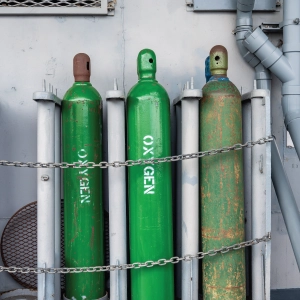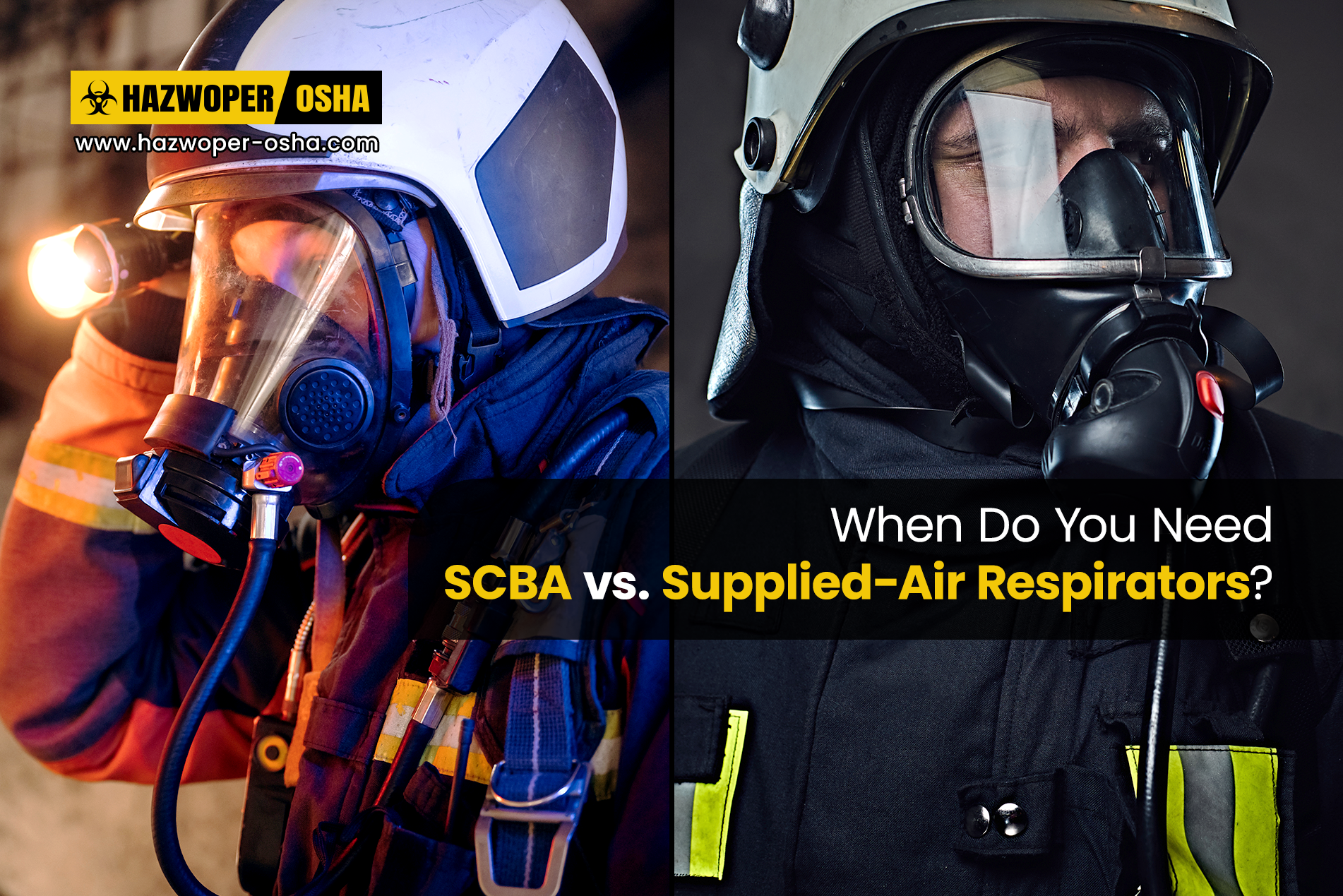Identifying and Safeguarding Against Asbestos Hazards

Asbestos, a group of naturally occurring silicate minerals, is found in rocks and soil around the world. As asbestos is strong as well as fire-resistant with insulating properties, it has been widely used as a raw material in the manufacture of construction goods, textile products, and automotive parts. Asbestos has been utilized since the time of early civilization. However, it was the Industrial Revolution of the 1900s that caused increased levels of asbestos mining and manufacturing, resulting in increased popularity. However, the discovery of the negative impact of asbestos on human health has resulted in regulations being enacted on asbestos exposure and use to minimize and eliminate asbestos hazards. Still, the existence of asbestos use in varied industries persists. Hence, OSHA has developed and implemented specific asbestos standards to protect employees from asbestos hazards when working in the general industry, shipyards, and construction.
 Why is Asbestos Exposure Hazardous to Health?
Why is Asbestos Exposure Hazardous to Health?
The increased risk of asbestos exposure is mainly due to asbestos fibers - which are small, light, and unseen by the human eye. When asbestos is moved, broken up, or dislodged from its original location, tiny fibers separate and enter the atmosphere, unlike other minerals that turn to dust. Hence, asbestos fibers are easily carried in the air and inhaled by people when asbestos-containing materials (ACM) are removed or moved. These asbestos fibers get trapped in the lungs and can also lodge in the human digestive system, triggering health hazards. However, ACM that isn't moved and remains intact is not a health hazard, as the likelihood of asbestos fibers forming is negligible.
OSHA defines asbestos-containing materials (ACM) as any material containing more than 1% of asbestos (OSHA, n.d.a.)
 Identifying Asbestos Exposure
Identifying Asbestos Exposure
As asbestos poisoning can only occur if asbestos is moved, broken up, or dislodged from its original location, workers with the highest risks are those who
- have direct contact with asbestos (such as miners and chemical plant workers);
- use asbestos as a raw material for the manufacture of goods, and
- use asbestos-containing materials (ACM) in conducting their job tasks.
The largest group is likely the people using ACM as part of their job task, as this would include occupations such as construction workers, plumbers, shipyard workers, power plant workers, automobile mechanics, boiler workers, and insulation workers.
People working in these occupations should also be aware of the products that may contain asbestos. OSHA has identified the below products as ACM if installed before 1981.
- Thermal system insulation
- Roofing and siding shingles
- Vinyl floor tiles
- Plaster, cement, putties, and caulk
- Ceiling tiles and spray-on coatings
- Industrial pipe wrapping
- Heat-resistant textiles
- Automobile brake linings and clutch pads (OSHA, 2014)
Diseases Caused by Asbestos Exposure
Asbestos is a known human carcinogen. According to OSHA, the highest risk of workers succumbing to asbestos-related diseases is when they are exposed to asbestos over a longer-term, very frequently, or in high concentrations. The two most treacherous disorders linked to asbestos exposure are cancer and chronic lung disease.
Chronic Lung Disease
Chronic lung disease affects the lungs and respiratory system. Asbestos poisoning causes chronic lung disease known as Asbestosis. Asbestosis results in inflammation and scar-like tissue to form on the lungs resulting in decreased elasticity and breathing difficulty. Asbestosis does not happen overnight. This disease occurs with prolonged exposure to asbestos over time or in high quantities.
Common Symptoms: Shortness of breath, wheezing, a feeling of tightness in the chest, chronic cough, recurrent respiratory infections, lack of energy, and swelling in ankles, feet, or legs.
For additional information, refer to the American Lung Association webpage on Asbestosis.
Cancer
Long-term asbestos exposure can result in cancer, in particular, lung cancer, gastrointestinal (stomach) cancer, and mesothelioma. Mesothelioma causes cancer of the lining of the chest and abdominal cavity. Common symptoms include chest pain and breathing difficulty. For additional information on mesothelioma, visit the American Cancer Society's webpage.
 Regulatory Protection for Workers Exposed to Asbestos Hazards
Regulatory Protection for Workers Exposed to Asbestos Hazards
OSHA classifies asbestos exposure in construction work into four work classifications ranging from the most potentially hazardous work to the least dangerous jobs. As such, employers must identify workers falling within the separate classes and provide them with the requisite tools to ensure their health and safety in the workplace. Safety measures range from engineering controls, work practices, respiratory protection, decontamination facilities, training, hazard communication, medical surveillance, and exposure monitoring to separate lunch areas.
OSHA’s construction standard 29 CRF 1926.1101 Subpart Z, regulates asbestos exposure of employees whose work tasks involve the following:
- Demolition or salvage of structures where asbestos is present;
- Removal or encapsulation of materials containing asbestos;
- Construction, alteration, repair, maintenance, or renovation of structures, substrates, or portions thereof that contain asbestos;
- Installation of products containing asbestos;
- Asbestos spill/emergency cleanup; and
- Transportation, disposal, storage, containment of, and housekeeping activities involving asbestos or products containing asbestos, on the site or location at which construction activities take place. (OSHA, n.d.b.)
OSHA’s 29 CFR 1915.1001 Subpart Z regulates asbestos exposure of shipyard employment comprising of ship repairing, shipbuilding, and shipbreaking. The following work tasks are included in the standard.
- Demolition or salvage of structures, vessels, and vessel sections where asbestos is present;
- Removal or encapsulation of materials containing asbestos;
- Construction, alteration, repair, maintenance, or renovation of vessels, vessel sections, structures, substrates, or portions thereof, that contain asbestos;
- Installation of products containing asbestos;
- Asbestos spill/emergency cleanup; and
- Transportation, disposal, storage, containment of, and housekeeping activities involving asbestos or products containing asbestos, on the site or location at which construction activities take place. OSHA, n.d.c.)
While OSHA’s general industry standard 29 CFR 1910.1001 Subpart Z regulates occupational asbestos exposure in all industries covered by the Occupational Safety and Health Act except for construction work (covered by 29 CFR 1926.1101) and shipyard employment (covered by 29 CFR 1915.1001). Some examples of occupations covered under the general industry standard are workers involved in maintenance work, brake and clutch repair, and the manufacture of asbestos-containing products.
OSHA Recommended Training to Safeguard Workers
OSHA recommends training for employees exposed to asbestos in the course of their work. Three training levels aligned to the class of work of the employee are specified. Read our blog on OSHA Construction Asbestos Awareness for further details. We also provide online, in-person group, and virtual instructor-led training for Asbestos Awareness at Level 1. Enroll for the OSHA Asbestos Awareness Training course today!
References
- Asbestos.com (2020, February 3) History of Asbestos. Website. https://www.asbestos.com/asbestos/history/
- OSHA. (2002, Revised). Asbestos Standard for the Construction Industry: OSHA 3096. Website. https://www.osha.gov/sites/default/files/publications/osha3096.pdf
- OSHA. (2014). OSHA Fact Sheet – Asbestos. Website. https://www.osha.gov/sites/default/files/publications/OSHA3507.pdf
- OSHA. (n.d.a.). 1910.1001 – Asbestos. Website. https://www.osha.gov/laws-regs/regulations/standardnumber/1910/1910.1001
- OSHA. (n.d.b.). 1926.1101 – Asbestos. Website. https://www.osha.gov/laws-regs/regulations/standardnumber/1926/1926.1101
- OSHA. (n.d.c.). 1915.1001 – Asbestos. Website. https://www.osha.gov/laws-regs/regulations/standardnumber/1915/1915.1001

 EN |
EN |  ES
ES





























































































































